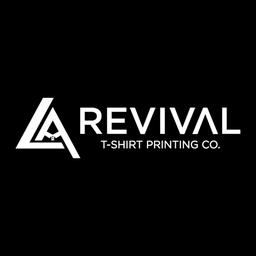An All-in-One Print Shop Management Software
Get all the tools you need to get organized, grow sales, track inventory, and increase customer satisfaction.
No credit card required. Cancel anytime. Free demo.Super Simple. Surprisingly Powerful
YoPrint’s got everything you need to streamline your print shop in one place. Sales, production, inventory, customer communications - all of it in an intuitive interface. You’ll see where everything is, understand what everyone’s working on, and know exactly where to put the next thing everyone needs to know about. YoPrint is feature full and foolproof.

Client Success Stories
Real stories of real success. Take a deep dive into how YoPrint has helped print shops.
How Inked Up Graphics increased sales by 56% and grew its customer base with YoPrint
“If looking to scale your business and be able to keep up and handle the growth, you need a shop software like this. You don’t even have to use all the features that are available, too. Start with your quotes and sales orders, get your art proofs in there, collect your payments, and just get jobs in and out and get used to it, and then scale with it as you need.“ - Eric Jimenez
Start your 14-day free trial today
Production Planning - Chaotic to Systematic
More productive, fewer mistakes. Customize statuses and tasks to fit your business’ workflow. Prioritize, assign and track tasks in one simple visual scheduler. Meet every due date, every time.

Stockout Often? Stock Up Instead
Take your business to the next level with YoPrint’s integrated inventory management. Know in real-time your stock on hand, goods you need to order, and goods you are waiting to receive at all times. Effortlessly manage multiple locations. Never worry about overstocking or understocking with YoPrint.
Super Fast Sales Cycle
From quote creation to delivery, YoPrint speeds up the sales fulfilment process. Create a quote in minutes, get digital approvals, collect payments, print packing slips, and so much more. Get more orders completed and out the door faster than ever. Increase your capacity, print more, and sell more.

A Portal to Customer Satisfaction
Provide every customer with their own best-in-class dashboard where they can see all their orders, approvals, mockups, make payments, download their invoices, and even email or SMS you directly. Speed up customer communication and complement your professional service with an exceptional customer portal.
Your customers don’t want to learn a new system? Send emails from YoPrint and let your customer respond to them directly. YoPrint will always keep them together for you.

Connecting with Your Existing Software
YoPrint provides best-in-class integrations with leading providers to help you stay productive and save time. With integrations ranging from product catalogs, to payment processors, accounting software, and shipping solutions, YoPrint fits right in with the software you already use.

Hundreds of businesses have switched to YoPrint
Find out why apparel decorators love YoPrint over other leading solutions.

"Creating labels couldn’t be easier. When I’m in a pickle I just hit create label. None of that slow response stuff with UPS wanting to become unresponsive."
Ben Nguyen
LA Revival

"The speed at filling out work orders is amazing now! The program automatically calculates all totals including tax...our customers love YoPrint too."
Trevor Karns
Boundary Waters Screenprinting

"If you struggle with multiple machines and tracking it all down to make sure the order is getting done...they designed the job system to help!!"
Mike Lindsay
A&J Screening
Get your print shop organized like never before. Get YoPrint
Try YoPrint free for 14 days. No credit card required.